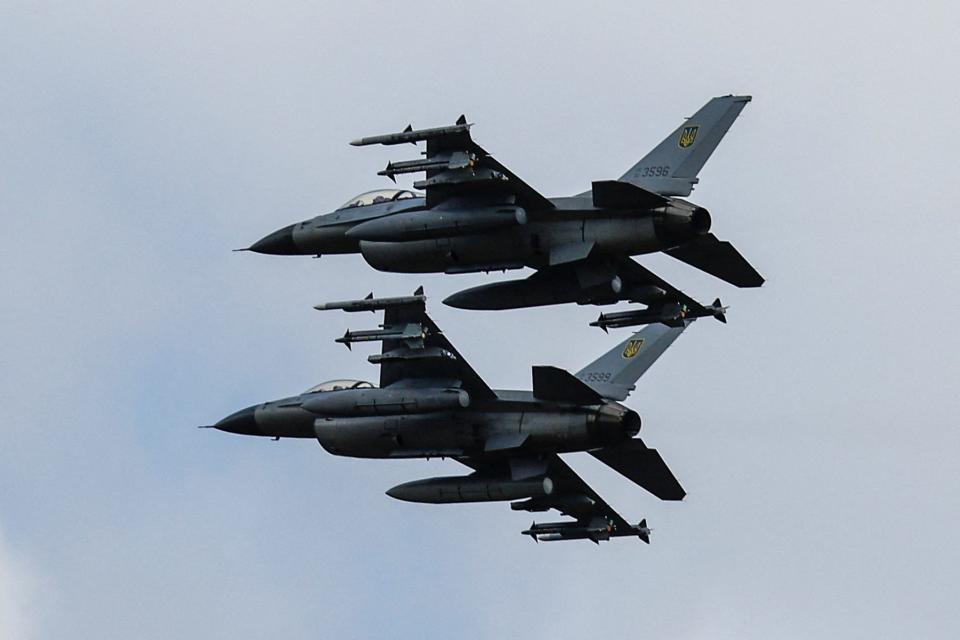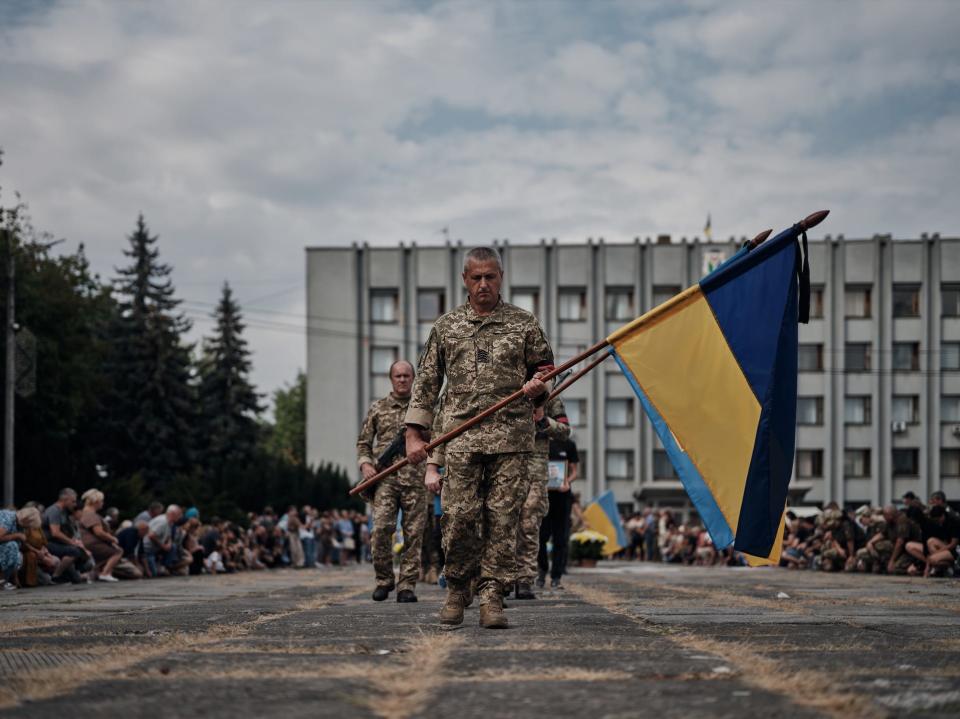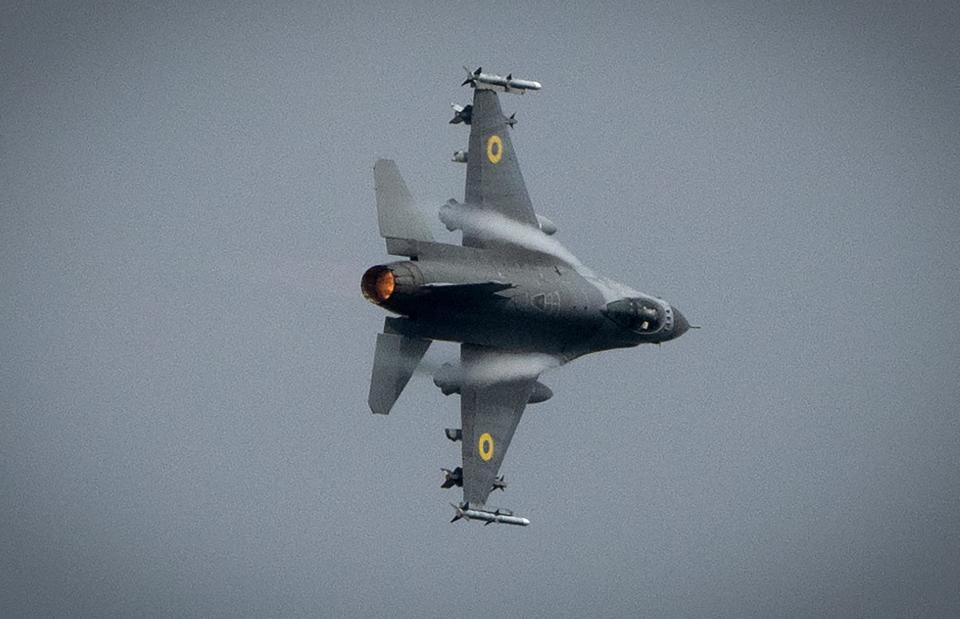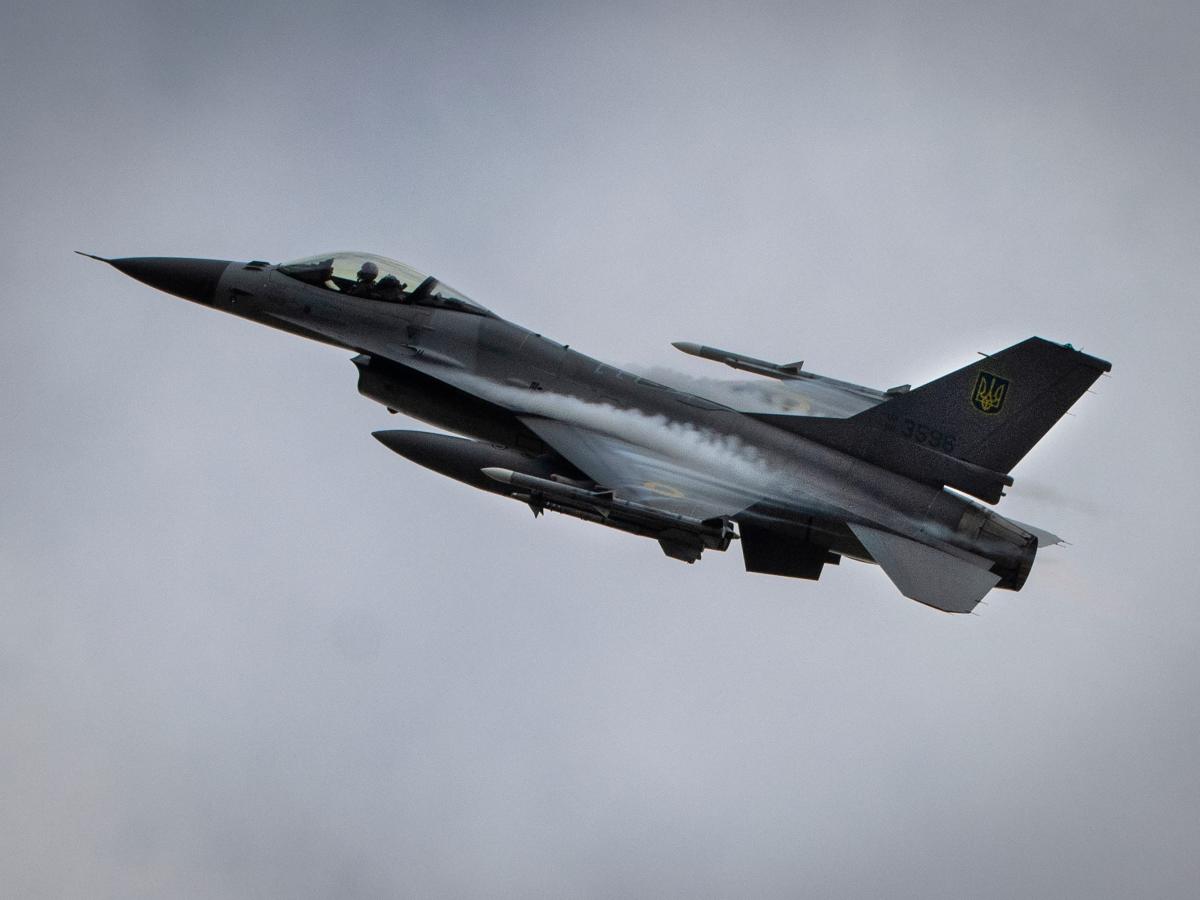-
Ukraine lost one of its few F-16s last week while defending against Russian missiles and drones.
-
It was initially thought that Kiev would use its F-16s for air defense, given the increased risk in other missions.
-
But the massive Russian attack and loss of fighter jets last week show that even defensive missions are still dangerous.
Before Ukraine received its first batch of F-16s a few weeks ago, one of the big questions surrounding the transfer was how Kiev would use its small inventory of NATO-supplied fighter jets.
When the jets arrived in Ukraine, initial images of the F-16s and their missile equipment suggested that Kiev would deploy the jets in an air-to-air role, rather than for offensive missions where they would be more vulnerable.
Last week, Ukraine’s F-16s flew into combat, defending against a massive Russian airstrike. But one of them crashed, killing its pilot, underscoring how even missions initially thought to be relatively low-risk are still dangerous.
“Flying fighter jets is a dangerous business, even in any situation,” Vincent Aiello, a former U.S. Navy pilot who flew F-16s in addition to F/A-18s during his military career, told Business Insider.
Ukraine is set to debut its F-16s to the world in early August after a years-long wait for the combat-proven fighter jets. The first official images of the fighters showed them armed with U.S. air-to-air missiles, prompting experts and analysts to suggest that Kiev would likely use the planes in a defensive role.

Alternative missions for the Ukrainian F-16s could include close air support (CAS) or suppression and destruction of enemy air defenses (SEAD/DEAD).
But Ukraine’s supreme commander, Oleksandr Syrskyi, said earlier that he did not want the F-16s to fly too close to the front lines, where they could fall victim to Russia’s surface-to-air missile systems. He said they would instead bolster Kiev’s air defenses.
That is exactly what the fighter jets did on August 26, giving Ukraine an extra defensive boost when Russia attacked the country with hundreds of missiles and drones in what was reportedly the largest aerial bombardment of the war.
Days later, Ukraine acknowledged that one of its F-16s had crashed, killing its pilot, while engaging Russian missiles during the attack. It is unclear what caused the fatal incident — whether it was friendly fire, pilot error, aircraft malfunction or enemy munitions — but Kiev said an investigation was underway.
But regardless of the cause of the crash, the operational conditions are undoubtedly challenging during such a large-scale attack involving a mixed Russian strike package.


Last week’s Russian bombardment included a mix of one-way attack drones, cruise missiles and ballistic missiles. Some of the weapons used were fired from Tu-95 strategic bombers, Su-34 fighter-bombers and Su-57 fifth-generation aircraft.
On the Ukrainian side, various air defense systems came into play to intercept as many of these threats as possible. These included both Western and Soviet-based air defense systems and fighter aircraft such as the F-16.
Mike Torrealday, a retired U.S. Air Force colonel who flew combat operations in the Middle East with the F-16, said air defense is a “very delicate dance to perform.”
Trying to intercept incoming missiles and drones means pilots have to fire at threats, carefully maneuver the aircraft, and make sure they don’t enter areas where they risk friendly fire. Furthermore, the risk of spatial disorientation increases exponentially when doing all of this at night, making it even more dangerous.
“There’s stuff flying everywhere,” Torrealday said, “and being in the wrong place at the wrong time can be very deadly.”


Air defense may be safer than supporting ground troops, taking out air defenses or bombing heavily defended enemy positions, but “it is certainly not a piece of cake,” he added.
In addition to the challenging operational conditions, there is another potential complication for Ukrainian pilots: the F-16 is still a brand-new capability for Ukraine, and last week it saw its first combat deployment.
Despite the many months of training the pilots have undergone, it is still an unfamiliar aircraft, very different from the Soviet-era jet fighters they were used to flying.
“I think it would be a very chaotic environment anyway, which is compounded by the fact that you have a new aircraft and it’s only been in service for a week in that conflict,” Aiello said, adding that flying fighter jets and using them in combat is inherently risky.
“If you do both, the risk is greater,” he said.
Read the original article on Business Insider




